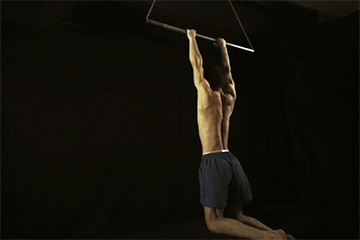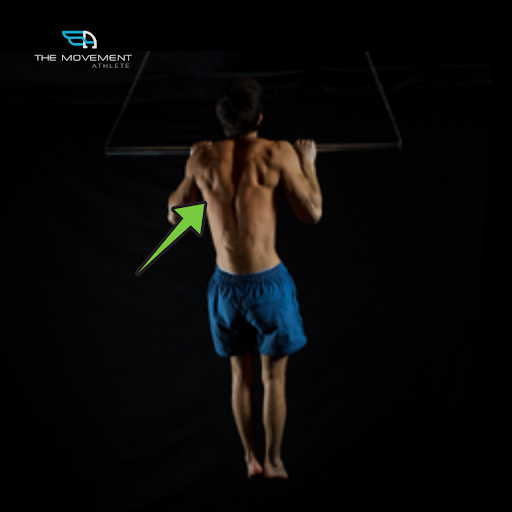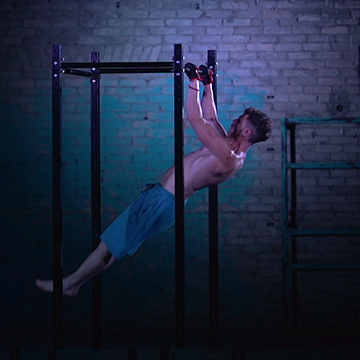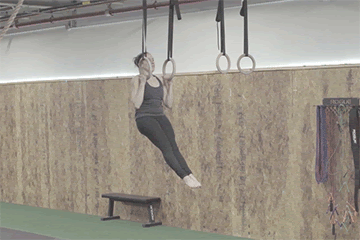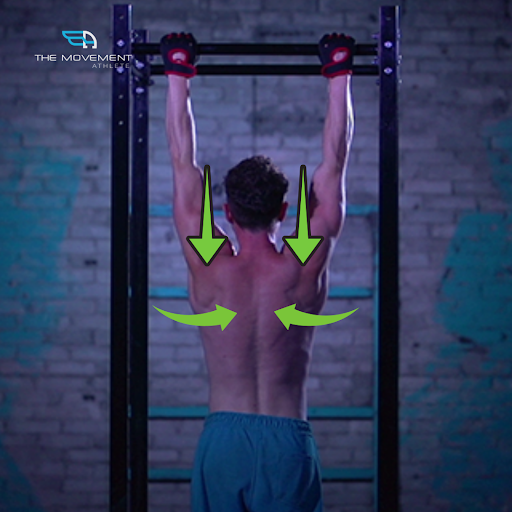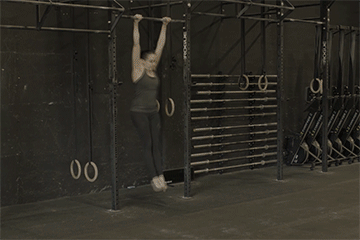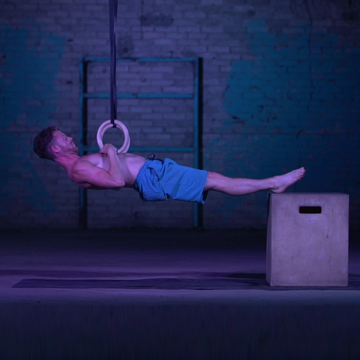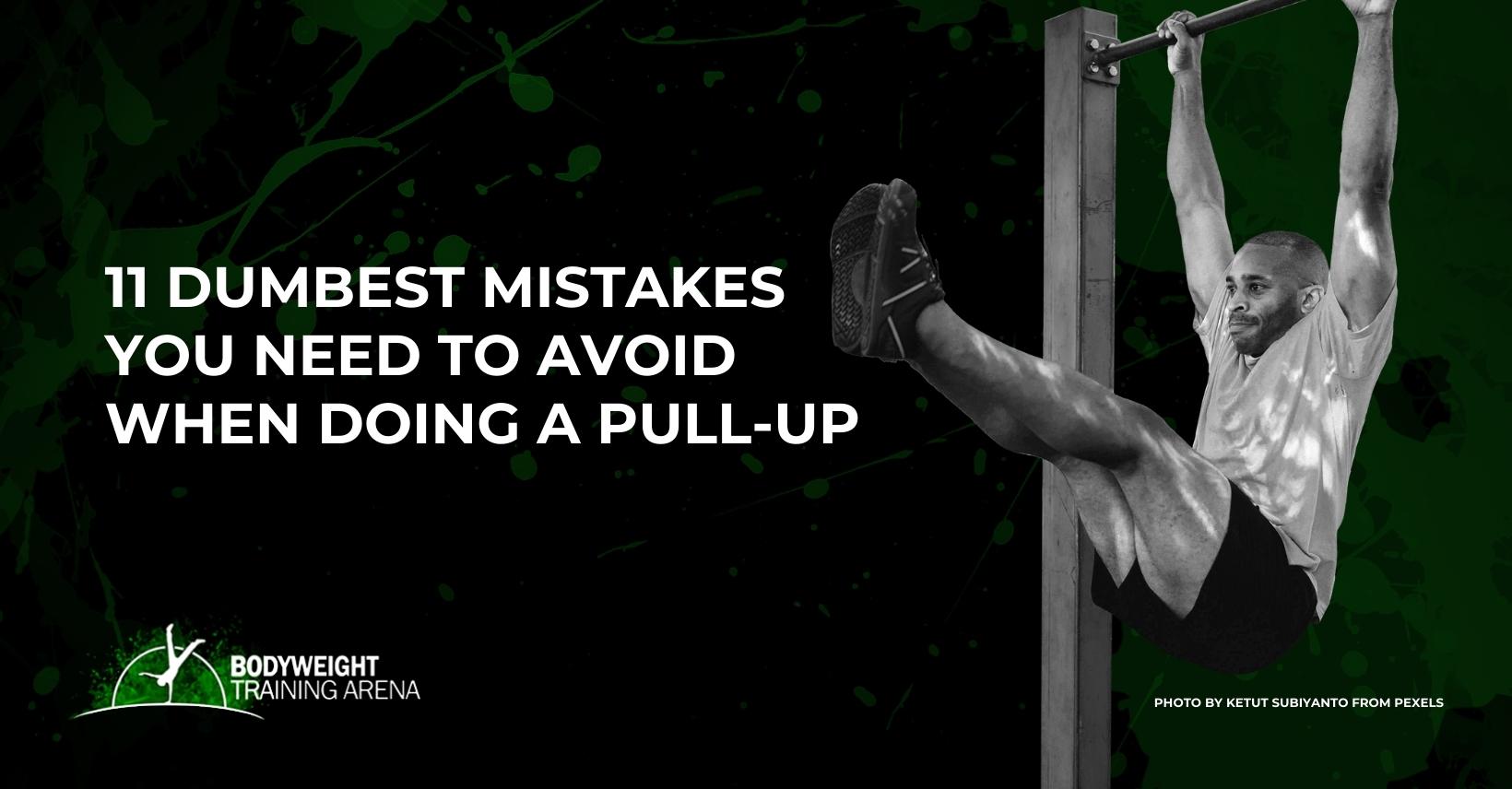
Join the tribe of Movement & Calisthenics Athlete – People just like you that are working with their own body weight to get strength, lose fat build muscle, recover from injuries and live their best lives!
Everybody should learn how to do a pull-up! Pull-ups are one of the best exercises you can do for your body. However, it’s easy to fall into the trap of the common pull-up mistakes which will hinder your progress.
If done correctly, it can promote excellent upper body strength for everyday movement in a very safe manner and also be a great back-building exercise. AND YES, you can build muscle with this bodyweight exercise.
The pull-up is a technically demanding move. It looks simple and it’s one of the most basic exercises but it’s not really as easy as it seems. Even though it’s a calisthenics basic and fundamental move, many people usually can’t do it properly or struggle even to do a single rep.
As a result, many in the gym or at home who include pull-ups in their training commit common mistakes which tend to do more harm than train you for progress.
In this article, we’ll be covering the common mistakes that could be hindering your progress in building a strong back, powerful arms, and a solid core through this amazing exercise.
11 Common Pull-up Mistakes
Before we get started we strongly recommend watching our video on Pull Up Mistakes
Now lets talk about every single one of them separately:
Not doing Full Range of motion
The common range for regular pull-ups is starting from the dead hang or active hang then pulling yourself up with your back muscles until your chin is over the pull-up bar, then lowering back to the starting position with no bend in the arms.
Unfortunately, many fall into the limited range of pull-ups. While half-reps are not always bad, it has a place and is usually done for refining sticking points in a movement pattern.
Doing full range allows you to build strength through the FULL RANGE which allows for better muscular and strength gains as supported by 2020 scientific research.
Neck strain
A common mistake performed is straining the neck forward to get the chin over the bar, AKA “the gooseneck”.
You would want your lats and upper body by the guide to be able to hoist yourself over the bar and not cheat by sticking your neck out.
Keep your head and neck in a neutral position throughout the pull-up motion. It might be tempting to push your neck to get your chin over the bar especially when you are starting to get fatigued in your workout. If this happens, regress to an easier progression such as using negatives or implementing rest-pause into your set.
Hunched back
Thoracic extension at the top for better and stronger pull.
The hunched back position looks like a good pull-up but it actually limits your pulling capacity since the shoulder blades, rotator cuff, and lat are not in the optimal position for pulling motions. This can also lead to pullups dominant with the arms instead of your back.’
You might be able to pull hard until your elbows are drawing to the back of the body which is good, but pull mechanics will still be limited due to the chest caving in, limiting the capacity to pull.
Aim for thoracic extension and leading with your chest when doing pull-ups to maximize form and gains.
Arching pull
Avoid this trajectory and aim for a vertical movement.
While it seems that as long as you’re just hoisting up to the bar is already fine, the trajectory of your pull-ups massively affects how the exercise hits your body.
An arching pull tends to make you want to use momentum and swing to do pull-ups even a little bit. It’s best to pull in a straight line vertically to maintain muscular activation instead of training with momentum in each rep.
Uncontrolled motion
All exercises, even the explosive ones, need to be done in a controlled manner. Pull-ups are not an exception. This means from the start, when you pull up to the top until you slowly lower down either to a dead hang or active hang position, you need to have a conscious effort in moving through the full range of motion.
A common problem is dropping out with no control from the top position to get back into the starting point. This mistake is dangerous, especially for your shoulders. Focus on controlling every rep in every phase of the exercise.
Always maintain a controlled movement and tension throughout your body.
Arching lower back
A good tip is to also move the leg a bit forward to keep your core engaged.
Most people overlook this issue, especially when performing pull-ups where the feet can touch the floor. This is very common in a gym setting, but crossing your legs behind tends to arch the lower back which disengaged the abs during the movement.
Lacking core engagement and stability decrease the overall body tension as the trunk muscles perform much in keeping the energy generated maximized to execute a pull-up.
In fact, a 2018 EMG (electromyography) study indicates that when performing proper pull-ups, your core, or specifically your ab muscles, plays a major role in performing the movement.
So adding here next to the list is the lower body position, as said earlier, affects the core activation when performing pull-ups. Instead of putting it behind the body, place your legs underneath or slightly forward of the body to generate maximum core activation. Better core = stronger ability to do pull-ups.
Not pushing your shoulders back and down
Push your shoulder down away from your ears and your shoulder blades pinched together.
If you’re new to calisthenics workout, the terms retraction and depression might have a different meaning to you.
To do retraction of your shoulder blades, imagine pinching your shoulder blades together as tight as you can.
To do the shoulder depression, push your shoulders down and away from your ear.
Keep these positions at the start and keep them pinched together through the full pull-up ROM.
These are done so that your back muscles can maximize their engagement so you can do more pull-ups, hit the right muscle groups, and keep your shoulders safe at the same time.
Too low rest periods
Pull-ups correctly executed is a difficult exercise and puts a high strain on the targeted muscle groups for excellent strength gain.
For that reason, many people make the mistake of resting too fast for like 30 seconds to a minute only.
This is too short for your upper body to recover enough to get more pull-ups for more stimulation.
Aim to get around 2 to 3 minutes of rest in between sets. It might feel too long or boring, but it will definitely make a difference in how much volume and quality of movement you can perform.
For an in-depth explanation of rest periods, check this article out: How Long Should I Rest in Between Sets? : Make faster and safer progress while resting
Not putting enough volume
A common mistake why some people don’t progress when they train with pull-ups is their lack of progressive overload in their training through adding VOLUME.
Volume can be quantified as reps x sets in regards to the intensity of an exercise. Not adding enough volume to your workout will limit your potential to build muscle and grow stronger in your training.
EXTRA TIP – Use chalk to add grip strength especially for those who have sweaty palms that might be affecting the training.
Improper grip width
Grip width has a small bearing on back muscle activation according to Leslie, Comfort. 2013, but still could affect how you perform pull-ups.
Too wide to increase lat activation but it actually decreases the range of motion of the exercise and adds a higher risk of shoulder impingement due to the unnecessary strain put on the rotator cuff
Too narrow add too much tension on the forearm muscles which can limit you from adding more reps since your forearms get fatigued first before your back muscles do.
A good guideline is going slightly wider than shoulder-width apart but there could be some slight deviation to this since this would differ from person to person. Find the comfortable grip width for you where you feel the strongest.
Kipping
Kipping muscle-up is a skill on its own but it’s not best for our goal of getting good strict pull-ups and building strength.
The ultimate mistake, if you’re goal is to perform good form strict pull-ups, is doing kipping pull-ups.
This is a movement pattern that looks similar to a pull-up but doesn’t translate well to doing the strict form. Use of momentum through violent kipping motions could put unnecessary strain on your shoulders and elbows.
Kicking pull-ups are relatively high-risk and demand more technique and use of momentum rather than strength and control. It has its place but it’s not ideal for building a good position on the fundamentals.
Form each rep with controlled movement if you want to achieve the muscle and strength gained from the exercise.
Pull-up mistakes are commonly done because of two things:
It’s either you still lack the knowledge of how to properly do pull-ups OR you might still be lacking the right foundations and rushing to perform the movement when you are clearly not yet prepared for it enough.
You might be doing all the mistakes if you are simply not strong enough. The perfect form of pull-ups will come to you if you have addressed the weaknesses.
The key here is progressive calisthenics. This means progressing towards a pull-up using a set of exercises leading to the main goal: the pull-ups.
Do the suitable progression that fits your current skill level then increase the volume. When you develop more strength, progressively increase its difficulty by moving to the more challenging progression.
Here’s a general progression of this move:
- Assisted band pull-ups
- Leg-assisted pull-ups
- Negative pull-ups
- Chin-ups/neutral-grip pull-ups
Bodyweight rows are a fantastic back exercise that has a transfer to your pull-up strength. Better include them in your pull-up workout.
It’s also a great idea to add supplementary exercises such as bodyweight rows to help you improve your back muscles further and also include mobility exercises to minimize the risks of any potential injury while increasing your performance.
Conclusion
Good form and techniques is stronger, safer, and faster progress.
QUALITY > QUANTITY
Once you grow stronger and master the pull-ups, you can progress to harder progressions such as the one-arm pull-ups or add more weight to the exercise.
Mastering the pull-up is a challenging, but rewarding feat of strength which not only translates to your calisthenics journey but also in your everyday quality of life.
If you feel like you need more help with your pull-up fundamental, it’s best to get a personalized program that guides you every step of the way.
For personalized and adaptive calisthenics assistance, begin your journey with a short assessment of what your body can do so we can provide you with a tailored program just for you.
TAKE THE ASSESSMENT NOW!

